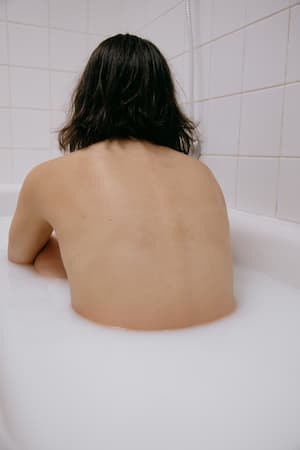
Back Pain Relief In Elderly People: Alternative Treatments, Therapy, And Lifestyle ModificationsBack pain, especially lower back pain, is one of the most common complaints found in seniors.Elderly people, aged 60 and above, regularly pay visits to healthcare centers for chronic back pain problems (it is chronic if the pain or ache lasts longer than three months).With age catching up, older adults begin to lose their muscles-strength and their bones start deteriorating as well.
This results in consistent back pain coupled with increased resistance to healing.Photo by Sinitta Leunen on UnsplashBack pain in elders can be intensely frustrating as it may lead to decreased mobility, sleeping issues, and other problems and can subsequently affect the mental health and overall well-being of an individual.At first, the symptoms (loss of flexibility or stiffness in the back; the pain being most pronounced in the early morning hours and again around dusk; feeling pain while bending or when lifting ones arms or limbs; etc.) could be intermittent.However, if left unattended, the issue of chronic back pain can soon develop into steadier and more consistent pain and may eventually lead to a condition like sciatica.
It also doesnt help that a number of different factors contribute to the development of chronic back pain in seniors and it is often difficult to pinpoint these causes.Accordingly, there is no systemic treatment or cure for it.In this article, we will briefly touch upon the causes of back pain in senior citizens and will then go on to discuss in detail the measures they can take (apart from and in addition to pharmacologic treatments) to avoid or relieve back pain.Causes of Back PainResearch tells us that a majority of the back pain caused in seniors is related to various spinal pathologies that come with aging.These include osteoporotic vertebral fractures, spinal infection and lumbar spinal stenosis, disc problems such as bulging or herniated disc, tumors, and osteoarthritis.
As for factors affecting the prognosis and management of these pathologies, they include progressive spinal degeneration, dementia, physical inactivity, and age-related perception and processing of pain.Fortunately, however, there are a number of pain management strategies that can help the back pain symptoms in the elderly.Growing numbers of research in the field suggest that many of these strategies and rehabilitative programs are far more effective than they were thought to be even in the recent past.Rehabilitative Programs and Pain Management Strategies for Back Pain in the Older Adults1.
Physical TherapyPhysical therapy primarily consists of a set of exercises done under the guidance of a licensed spine physical therapist.However, not everyone is prescribed the same set of exercises.The latter needs to be tailored to ones specific condition and symptoms.
Physical therapy exercises for chronic back pain include core strengthening and aerobic exercises; flexibility and stretching exercises; exercises designed to test the pain tolerance limits in an individual; and exercises that help retrain ones posture.It is important to remember that the success of a physical therapy program relies heavily on keeping up with any prescribed exercise routine.2.Restorative YogaMany older adults have known to be found significant back pain relief through restorative yoga, a less strenuous version of the traditional practice.It has been noted that this specific form of yoga can do wonders in relieving pain in the back and the hips and in relieving the discomfort caused by osteoporosis arthritis.
One should however make sure to consult their physician first before resorting to restorative yoga or any other rehabilitative program that involves physical activity and exercises.Photo by Sasun Bughdaryan on Unsplash3.Alternative TreatmentsMassage therapyMassage therapy, when pursued regularly and systematically, has shown extremely positive results with regard to back pain in the elders.This form of therapy, which also includes procedures such as hot stone massage and acupuncture, helps relieve back pain by reducing swelling and inflammation in spinal muscles and by improving circulation.Aqua therapyLately, many back pain rehabilitation specialists have been recommending aquatic therapy to senior citizens.
Similar to massage therapy, aqua therapy not only helps in relieving chronic back pain symptoms but can actually better the condition and eliminate the possibilities of future occurrences of backache.In addition, aqua therapy helps elderly people to stay fit and active.Apart from the above, other (increasingly common) forms of alternative and non-surgical spinal treatments include electrical nerve stimulation, laser therapy, and biofeedback therapy.All of the latter comes with the potential to make significant differences for chronic back pain in elders.
Consult a spine specialist to know what sort of alternative treatment can most benefit your condition.4.Meditation and MindfulnessChronic back pain in seniors is trying both physically and emotionally.Depression, irritability, frustration, and other psychological aspects related to dealing with the pain day in day out can lead to persistence of spinal pain and may often aggravate it.
For this reason, many senior people these days are referred to a specialized rehabilitation psychologist.The latter may recommend different relaxation and cognitive strategies (such as meditation, milder forms of tai chi, yoga, etc.) that will keep the patient from focusing on pain and will also alter his perception of pain.In addition, these strategies may also help with debilitative psychological conditions such as depression and else.5.
Pharmacologic TreatmentAnalgesics or pain medication, muscle relaxants, anti-inflammatory drugs as well as injection-based procedures (nerve ablations, epidural steroid injections, nerve blocks) are all part of pharmacologic treatment used for chronic back pain in elders.However, an increasing number of physicians these days tend to not be in favor of opioid medications due mostly to all sorts of unwanted (and often unforeseen) side effects that those medications can give rise to.Many opine that pharmacologic treatment should not be used as the first and only recourse to chronic upper and lower back pain.
Also, it should not be used as a long-term line of treatment either.This line of thought is actually supported by the American Geriatrics Society which has strict guidelines in place as to how medical practitioners should manage chronic back pain conditions in their elderly patients.This, among other things, includes administering opioid medications to geriatric patients with different health conditions.6.
Lifestyle ChangesPhoto by Dylan Sauerwein on UnsplashProper dietIn sync with one or other forms of effective treatment, a healthy and proper diet will also assist older adults in reducing back pain.For example, foods rich in calcium and vitamin D are a must as they help keep our bones strong.On the other hand, inflammatory foods, such as processed food, foods high in refined sugars, or trans fat, must be avoided at all costs.
Consult a specialist dietician as well as your physician to come up with a diet plan that will help with your chronic back pain condition.Good quality mattressAll older adults should refrain from using the same bed for a prolonged period of time.Old beds and mattresses do a poor job of supporting ones back or neck.On the other hand, a good-quality mattress, such as a memory foam mattress, can offer great relief to people experiencing chronic back pain.
Memory foam mattresses are designed to form and shape around the body as we sleep and minimize the pressure points that lead to joint aches and back pain.Quit SmokingSeveral pieces of research show that smoking greatly increases the risks of developing spinal pain.Smoking causes major degenerative effects to our spinal tissues and the intervertebral discs.Additionally, smokers are also known to have a different and often more acute perception of pain compared to people who do not smoke.Finally, researchers have noted that older adults with limited or poor social support structures tend to suffer more from age-related conditions such as back pain.
For example, senior citizens living in long-term care facilities are known to rely heavily on the responsiveness and attentiveness of caregivers vis--vis recovery and finding relief from pain.Accordingly, it is necessary that families of older adults take proper care of them.In cases where sustained personal attendance or care is not viable, family members must consider engaging the services of a home caregiver.Proper social and emotional support and care can go a long way in alleviating conditions like chronic back pain and others in senior citizens.
Publisher: Elder Care Home Health ( Read More )

